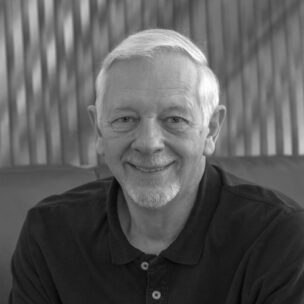by David W. Cook
An outdoor enthusiast and long-time nature photographer, David W. Cook's hobby took a completely different turn when he discovered the portrait work of Richard Avedon in a photography class. David, who also had a volunteer gig at the local fair in Northeast, Texas, shifted his lens from nature to people and embarked on a ten-year project dedicated to the employees of the traveling carnival. He quickly realized they are the real prize of the fair. In this post David takes us behind-the-scenes of the carnival and how he got there.
- Tell us about your series, People of the Carnival.
This year begins the tenth year of my current photography project, People of the Carnival.

In the fall of 2011, while doing volunteer work for our local county fair, I began watching the carnival as it was being set up. Trucks were driving in with rides folded in unrecognizable shapes. Men were unloading massive motors and laying miles of electrical cables on the ground. The once barren fairground was alive with activity.
I met the carnival owner and he gave me permission to photograph all of the activities. After a week of photographing – I was hooked.
At first I was drawn to the oddities of the carnival and it's seedier side. However, during my first year of photographing, I completely changed my preconceived notions. I fell in love with the people who worked there. I found the employees to be kind, friendly and welcoming. They allowed me to get a glimpse of their world and to see them as they really are - just people performing a job in life that many of us would never want to do. My photographic intent now is focused on the carnival workers who are hard-working, fascinating individuals, and honoring them.
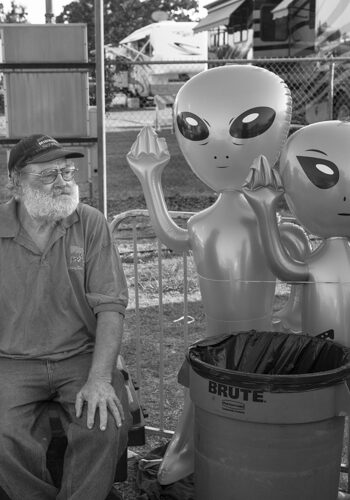
The life of a seasonal worker is layered with detail. Many of them are there because life has been harsh or they made unwise life decisions that give them few opportunities for employment. Others are there because they like the lifestyle of travel and not having to work in a structured job environment. Some of them were born into carnival life and never left, and some are there because they have no family and this life gives them a caring and supportive community to be around.
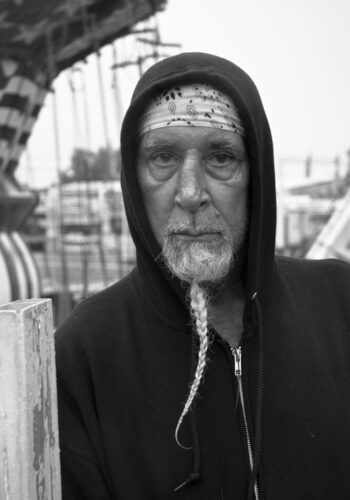
There are six or seven carnivals based in Texas and Oklahoma that I follow and photograph every year. I have been photographing many for five years or more and during that time I have become well acquainted with the workers and hear their life stories. Some stories are sad and some are frightening, but all of the stories come from their hearts.
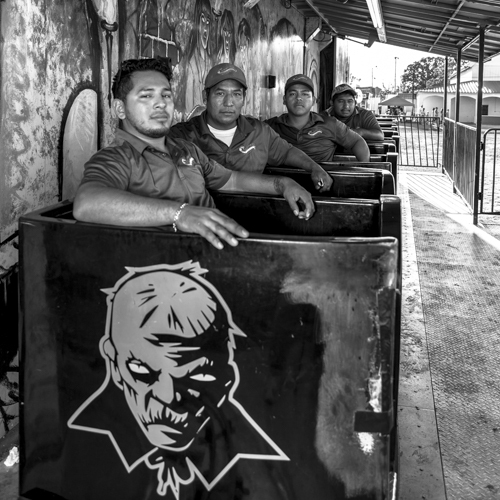
- Have you always photographed people? How has your photographic journey evolved?
I've been taking pictures for as long as I can remember. In the late 1970’s, my family and I were on vacation at a state park in Arkansas and a park ranger gave a presentation showing photographs of the four seasons at the state park. This wasn’t your ordinary slideshow. The ranger used about 10 slide projectors operating simultaneously, accompanied by music. His presentation was mesmerizing. The park ranger was a photographer and his work had been published in National Geographic Magazine. He took me under his wing, showed me different locations in the park, and taught me how to properly operate a camera and how to photograph nature.
My encounter with the state park ranger started me on a 20 year path of nature photography. I am an outdoors person, so nature photography allowed me to capture it's beauty and inspiration. This was also the period where I discovered the beauty of Kodachrome slide film.
After a 39-year career as a chemist and a computer programmer, retirement allowed time to pursue my interests. My wife and I enrolled in a photography class at our local junior college and we took classes there for several years. Later we pursued more instruction at Texas A&M University-Commerce. Since my undergraduate degree is in chemistry, I especially enjoyed black and white darkroom work. Today I shoot primarily digital.
What really turned my photographic path around was when an art instructor at the junior college showed me the book In the American West: Photographs by Richard Avedon. I looked at the images over and over. Around the same time, the Amon Carter Museum in Fort Worth, Texas featured an exhibition of Avedon's work, In the American West. After seeing these nearly life-size prints, I turned the direction of my photography to images of people.
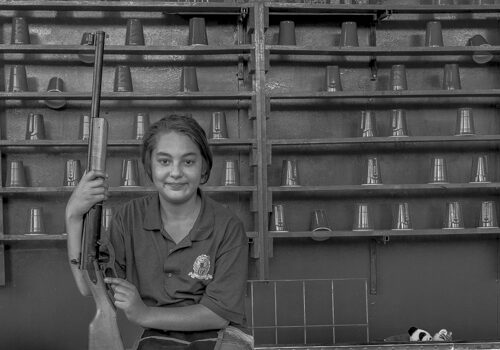
Most of my photographic work now is environmental portraiture of people. Richard Avedon continues to be the major inspiration for my work, along with inspiration from the works of August Sander, Edward S. Curtis and Yousuf Karsh.
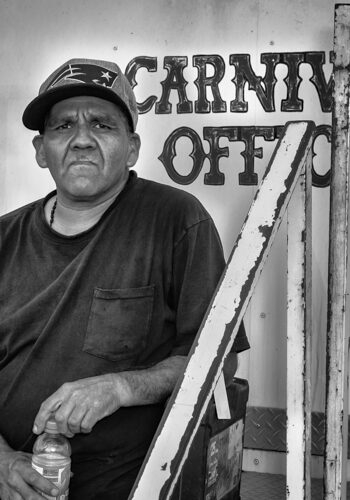
- How do you approach your carnival subjects?
During my time of photographing nature, if I wanted to take an image of a flower, a tree or a mountain, all I had to do was just walk up to it and snap away. Photographing the carnival is a completely different process.
First, I have to get permission from the carnival owner to do any photography. The owner is extremely busy and I only have about 20 or 30 seconds to give them my “elevator speech” of who I am, what my project is about, and how I will not disrespect the carnival or the workers. One owner told me, “No, you cannot!” three different times over three different days before he finally said, “Yes.” I've been photographing that carnival for the past five years now.
Second, I have to follow the proper procedures which keep me in the good graces of the owners.
Third, I have to approach the carnival workers, gain their trust and get them to open up to me. All of this is based on mutual respect.
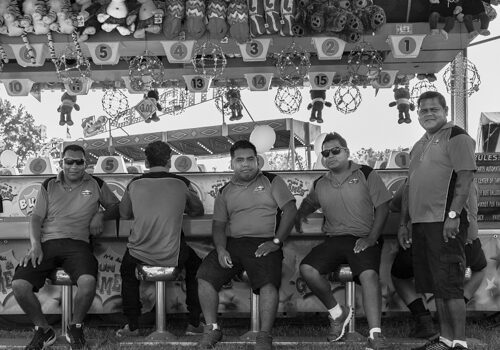
I love the challenge of not only being a photographer, but also being able to relate to my subjects and get the best out of them.
- What have you learned and what are you most proud of?
Over my ten years of photographing carnivals, I have learned how interconnected most of the carnivals are in Texas. One owner may have relatives that own or work for another carnival. The owners know one another and know what’s going on at the other carnivals. Many of the workers have friends that work for other carnivals.
All of these people talk back and forth, and they even tell each other about what I am doing.

One carnival owner told me that another owner said, “That photographer, he’s a nice guy. Go ahead and let him photograph your carnival.” A worker once said to me, “You know why we let you take our picture? It’s because we trust you.”
That’s what I am most proud of - the respect I give the owners and workers, and the trust they have in me.
To honor the individuals who have allowed me to photograph them, I give them each a photo. I used to print the images but now I give them a digital photo. I have also created hand-made books of their portraits. I am currently working on volume 4 of this series. Hopefully, these books will have a life beyond our own.
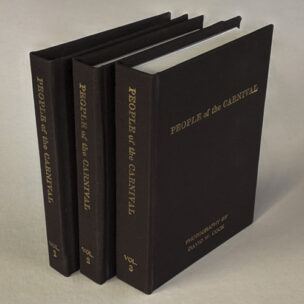
I never know if I will see a person the next year. I have become friends with so many of these individuals and I look forward to seeing them the next year. If I don’t see them again, I’m sad. Some workers go on to other carnivals, others can’t hack that lifestyle and quit, and several have died. But I keep going back, in hopes of seeing old friends and the chance to make new ones.
My carnival project continues!!
David W. Cook, born in Arkansas and based in Paris, Texas, has been a member of TPS since 2011. David does not have a personal website where he displays his work, nor does he have a CV of his photographic accomplishments. "I'm just a photographer doing what I enjoy and creating work that might mean something 100 years from now."
